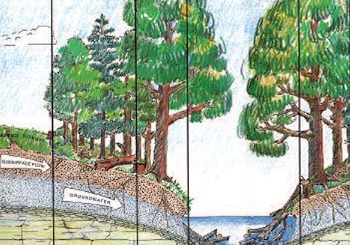Streamside Reforestation

It is now generally accepted that streamside forests represent the best management practice for protecting aquatic ecosystems from outside pollution by filtering out nutrients, sediments, and toxic contaminants before they get to the stream.
Stroud Center scientists are conducting long-term research evaluating their hypothesis that deforested streams deteriorate because of their need to process the dissolved nutrients, particulate organic matter, and organic pesticides that enter from the watershed.
The scientists have designed specific field experiments to test their beliefs that:
- Forested streams are consistently wider (and so have more bottom surface area per unit length) than contiguous meadow reaches; and
- Narrow stream width and the accompanying unnatural light, temperature and water velocity levels associated with deforestation cause significant changes in the structure and productivity of algal, macroinvertebrate, and fish communities.
In addition, the research seeks to identify and quantify social and economic issues that affect the restoration of streamside forests.
